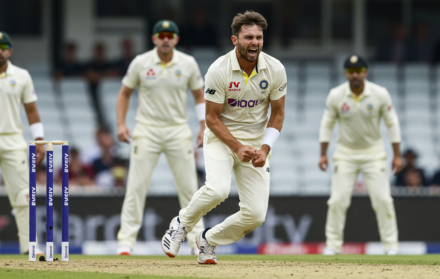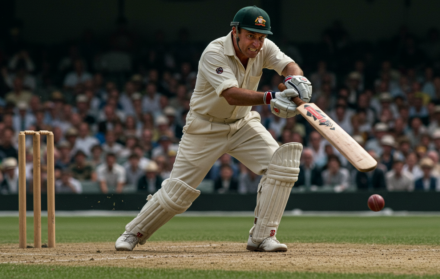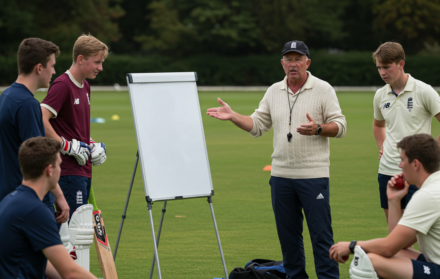
What Are The Best Recovery Techniques For Cricket Bowlers
The role of recovery in enhancing performance cannot be overstated, especially for cricket bowlers. Cricket is a physically demanding sport that requires explosive movements and repetitive actions, placing significant stress on the body. Proper recovery techniques are crucial for cricket bowlers to maintain their performance levels, prevent injuries, and promote long-term well-being.
Recovery is important for cricket bowlers due to various reasons. Firstly, it allows the body to repair and regenerate muscles, tendons, and ligaments that undergo stress during bowling.
Recovery helps reduce inflammation and muscle soreness, facilitating faster healing and reducing the risk of overuse injuries. Adequate recovery time improves energy levels, concentration, and mental focus, enabling bowlers to perform at their best.
There are several key recovery techniques that cricket bowlers should incorporate into their routine. Proper hydration is essential to replenish fluids lost through sweating and maintain optimal muscle function. Adequate rest and sleep are crucial for muscle repair and hormonal balance.
Stretching and flexibility exercises help improve range of motion, prevent muscle imbalances, and reduce the risk of injuries. Nutrition and a balanced diet provide the necessary nutrients for muscle recovery and growth. Ice baths and cryotherapy can help reduce inflammation and promote healing.
Massage and foam rolling techniques aid in loosening tight muscles, improving circulation, and reducing muscle tension. Active recovery, such as light exercises and low-intensity training, can help flush out metabolic waste and speed up recovery.
In addition to recovery techniques, cricket bowlers should also focus on injury prevention and long-term recovery. This can be achieved through proper warm-up routines, ensuring proper technique, and listening to their body’s needs.
Rehabilitation exercises are essential in recovering from any existing injuries and preventing future ones. It is crucial to have a well-structured recovery plan that includes a balance of rest, active recovery, and targeted exercises.
By prioritizing recovery and incorporating these techniques into their routine, cricket bowlers can optimize their performance, reduce the risk of injuries, and ensure their long-term success in the sport.
The Role of Recovery in Enhancing Performance

Recovery plays a crucial role in enhancing the performance of cricket bowlers. The role of recovery in enhancing performance cannot be underestimated. By allowing the body to rest and repair itself, recovery helps prevent injuries and fatigue, leading to improved performance on the field.
Effective recovery techniques, such as proper nutrition, hydration, and sleep, are essential to replenish energy stores. Active recovery, including light exercises and stretching, can also play a significant role in promoting blood flow and facilitating muscle repair.
Incorporating techniques like ice baths, massage, and foam rolling can further aid in reducing inflammation and soreness. It is important to prioritize recovery alongside training and practice as it ensures cricket bowlers maintain their physical and mental well-being while optimizing their performance.
Why is Recovery Important for Cricket Bowlers?
Recovery is crucial for cricket bowlers to maintain performance and prevent injuries. It allows their bodies to repair and replenish after intense physical exertion. Proper recovery helps prevent fatigue, reduces the risk of overuse injuries, and enhances overall well-being. Here’s why recovery is important for cricket bowlers:
- Restores energy levels and muscle strength
- Reduces inflammation and promotes tissue repair
- Helps maintain focus and mental clarity
- Improves flexibility and range of motion
- Boosts immune function to prevent illness
By prioritizing recovery techniques like hydration, rest, stretching, nutrition, and injury prevention, cricket bowlers can optimize their performance and longevity in the sport.
Key Recovery Techniques for Cricket Bowlers

Discover the essential recovery techniques that can help cricket bowlers excel on the field. From staying properly hydrated to getting adequate rest and sleep, to engaging in stretching and flexibility exercises, this section explores a range of strategies to keep bowlers at the top of their game.
With a focus on nutrition, ice baths, massage, foam rolling, and active recovery, these recovery techniques are backed by the latest research and expert recommendations.
Proper Hydration
Proper hydration is essential for cricket bowlers to enhance their performance and recover effectively. Maintaining optimal body temperature, lubricating joints, and transporting nutrients to muscles are all benefits of proper hydration.
To ensure proper hydration, it is important to drink water before, during, and after practice or matches. Additionally, monitoring urine color can help gauge hydration levels; light yellow or clear urine indicates adequate hydration. It is crucial to avoid excessive caffeine and alcohol consumption as they can dehydrate the body.
For intense training sessions, considering sports drinks is beneficial as they replenish electrolytes. Always remember, proper hydration can significantly improve performance, prevent fatigue, and reduce the risk of injuries. Stay hydrated to stay at the top of your game!
Adequate Rest and Sleep
To optimize their recovery and performance, cricket bowlers must prioritize adequate rest and sleep. It is crucial for these athletes to allow their bodies to repair and regenerate, as this reduces the risk of injuries and enhances overall well-being.
Muscle recovery, hormonal balance, and cognitive function are all dependent on getting enough sleep. To achieve optimal results, cricket bowlers should aim for 7-9 hours of sleep per night. Additionally, incorporating rest days into training schedules is essential to prevent overtraining and promote proper recovery.
By giving utmost importance to adequate rest and sleep, cricket bowlers can maximize their recovery and maintain peak performance on the field.
Stretching and Flexibility Exercises
Stretching and Flexibility Exercises are vital for cricket bowlers in order to enhance their performance and prevent injuries. Here are some key exercises that you can include in your routine:
- Static Stretching: Hold stretches for 15-30 seconds to improve flexibility in muscles such as hamstrings, quadriceps, and shoulders.
- Dynamic Stretching: Perform active movements that mimic bowling actions, like arm swings and leg swings, to warm up muscles and increase range of motion.
- Pilates and Yoga: These disciplines improve core strength, balance, and flexibility, which are essential for a stable bowling action.
- Foam Rolling: Use a foam roller to release muscle tension and improve mobility in areas like the calves, glutes, and upper back.
By incorporating these Stretching and Flexibility Exercises into your routine, you will be able to maintain optimal performance and reduce the risk of injuries on the cricket field.
Nutrition and Diet
To optimize recovery, cricket bowlers should pay attention to their nutrition and diet. Proper nutrition, along with a balanced diet rich in fruits, vegetables, whole grains, and healthy fats, plays a crucial role in replenishing energy stores, repairing muscle damage, and supporting overall recovery.
Key considerations include consuming an adequate amount of protein to aid muscle repair and growth. Staying hydrated is also important as it enhances performance and facilitates recovery.
Creating a well-structured meal plan that aligns with training needs and individual goals is essential for optimal performance and recovery. Consulting with a sports nutritionist can provide personalized recommendations to enhance nutrition and diet for better performance and recovery.
Ice Baths and Cryotherapy
- Ice Baths and Cryotherapy are popular recovery techniques used by cricket bowlers.
- Ice Baths involve immersing the body in cold water, usually between 50-59 degrees Fahrenheit, for about 10-15 minutes.
- Cryotherapy, on the other hand, involves exposing the body to extremely cold temperatures, typically below -100 degrees Celsius, for a short duration.
- Both ice baths and cryotherapy can help reduce inflammation, soreness, and muscle damage caused by intense training or matches.
- These techniques constrict blood vessels, which helps remove waste products from the muscles and promotes faster recovery.
- Ice baths and cryotherapy also stimulate the release of endorphins, providing pain relief and a sense of rejuvenation.
- It’s important to note that ice baths and cryotherapy should be used in moderation and under professional supervision to avoid potential risks or adverse reactions.
Massage and Foam Rolling
Massage and foam rolling are two highly beneficial recovery techniques for cricket bowlers. These techniques aid in muscle relaxation, reduce soreness, and improve flexibility. Here are some key points to consider:
- Massage: Professional massages help release tension, increase blood flow, and promote muscle recovery.
- Foam Rolling: Using foam rollers allows for self-massage, specifically targeting muscles and breaking up muscle knots.
- Benefits: Incorporating both massage and foam rolling techniques can enhance flexibility, prevent injury, and expedite recovery after intense training or matches.
- Frequency: It is recommended to have regular massage and foam rolling sessions, especially after strenuous activity, to maximize the benefits.
Fact: Numerous studies have shown that incorporating massage and foam rolling into recovery routines can significantly improve athletic performance and reduce the risk of injury.
Active Recovery and Light Exercises
Active recovery and light exercises are essential components of the recovery process for cricket bowlers. These techniques are instrumental in alleviating muscle soreness, enhancing blood circulation, and fostering flexibility.
Cricket bowlers can engage in low-intensity activities such as walking or cycling for active recovery. Alternatively, they can partake in light exercises like gentle stretching or yoga. By incorporating these practices on their rest days or following intense workouts, cricket bowlers can expedite their recovery and safeguard against potential injuries.
Moreover, active recovery and light exercises contribute to sustaining optimal fitness levels, enabling bowlers to deliver outstanding performances during matches.
Preventing Injuries and Promoting Long-Term Recovery

Proper recovery techniques are crucial for preventing injuries and promoting long-term recovery for cricket bowlers. In order to achieve this, here are some effective strategies to consider:
1. Warm-up and cool-down exercises: Engage in dynamic stretches and warm-up drills before practice or matches. By doing so, you can prepare your body for the upcoming activity and reduce the risk of potential injuries. Following these exercises, it is important to perform static stretches and cooldown exercises to relax the muscles and promote recovery.
2. Post-match nutrition: It is essential to consume a balanced diet that is rich in protein, carbohydrates, and essential nutrients. This will aid in muscle recovery and replenish energy stores, ultimately facilitating the long-term recovery process and minimizing the risk of injuries.
3. Adequate rest and sleep: Allowing sufficient time for rest and recovery between training sessions and matches is vital. It is recommended to aim for 7-9 hours of quality sleep each night. This uninterrupted sleep promotes proper recovery and ensures that your body is ready for the physical demands of cricket bowling.
4. Cross-training and strength conditioning: Incorporating exercises that specifically target the muscles used in bowling is beneficial. This includes focusing on core strengthening and shoulder stability exercises. By engaging in cross-training and strength conditioning activities, you can improve your performance and reduce the risk of overuse injuries.
5. Listen to your body: Pay close attention to any signs of fatigue, pain, or discomfort. It is important to address these issues promptly in order to prevent further injuries. You can implement the RICE technique (rest, ice, compression, and elevation) to alleviate any minor discomfort. However, if the issue persists or worsens, it is advisable to seek professional medical assistance.
By implementing these preventative measures and incorporating appropriate recovery strategies, cricket bowlers can effectively minimize the risk of injuries and optimize their long-term performance.
How Can Cricket Bowlers Prevent Injuries?
Cricket bowlers can prevent injuries by following these steps to maintain their performance and overall well-being:
- Warm-up: Always start with a proper warm-up routine to increase blood flow and loosen muscles.
- Strength training: Focus on strengthening the muscles used in bowling, such as the shoulders, back, and legs.
- Technique: Work with a coach to perfect your bowling technique and avoid putting unnecessary strain on your body.
- Rest and recovery: Allow ample time for rest and recovery between training sessions and matches.
- Proper nutrition: Fuel your body with a balanced diet that includes enough protein, carbohydrates, and vitamins.
- Cross-training: Engage in other sports or exercises to improve overall fitness and reduce the risk of overuse injuries.
- Listen to your body: Pay attention to any signs of discomfort or pain and take appropriate measures to address them.
- Stay hydrated: Drink plenty of water to prevent dehydration, which can make you more prone to injuries.
By following these steps, cricket bowlers can greatly reduce the risk of injuries and maintain their performance and overall well-being.
Importance of Rehabilitation and Rehabilitation Exercises
The importance of rehabilitation and rehabilitation exercises cannot be overstated for cricket bowlers. These techniques play a crucial role in preventing and recovering from injuries, thereby ensuring optimal performance on the field.
Additionally, rehabilitation is essential for strengthening injured muscles, improving flexibility, and restoring balance. It also helps in correcting biomechanical imbalances and reduces the risk of future injuries.
Cricket bowlers must prioritize essential rehabilitation exercises such as strengthening exercises, proprioception training, and mobility drills. To enhance their performance and overall well-being, it is vital for bowlers to follow a well-structured recovery plan that includes proper rest, nutrition, and hydration.
Tips for a Well-Structured Recovery Plan
To create a well-structured recovery plan for cricket bowlers, here are some tips for a well-structured recovery plan:
- Establish clear goals: When creating a recovery plan, it’s important to determine what you want to achieve. This could include reducing soreness or improving mobility.
- Include rest days: Make sure to schedule regular rest days in your recovery plan. These rest days allow your body to recover and prevent overtraining.
- Focus on nutrition: One important aspect of a recovery plan is proper nutrition. Be sure to fuel your body with nutrient-rich foods. This will support muscle repair and replenish energy levels.
- Incorporate active recovery: Engaging in light exercises, such as walking or swimming, can be beneficial for your recovery. These activities promote blood flow and aid in the recovery process.
- Practice proper sleep hygiene: Sleep plays a vital role in muscle recovery and overall well-being. Aim for 7-9 hours of quality sleep each night to support your recovery.
Pro-tip: Don’t forget to listen to your body. It’s important to adjust your recovery plan as needed based on how you’re feeling and any signs of fatigue or injury.





